Thetford is an historic market town in the unspoilt Breckland area of Norfolk. Known for its turbulent and influential past and Norman history, this medieval Norfolk town has lots of secrets to share!
There are lots of Thetford attractions to keep everyone busy. With a couple of award winning museums, a heritage trail and castle to discover, as well as the wonderful Thetford Forest on the doorstep, this often overlooked Norfolk town is well worth a visit.
This round-up of all the must-do things in Thetford and the surrounding area will help you plan your Norfolk short break or holiday, so here are my top Thetford highlights…
RELATED POST: The Ultimate Local’s Guide to Norfolk England
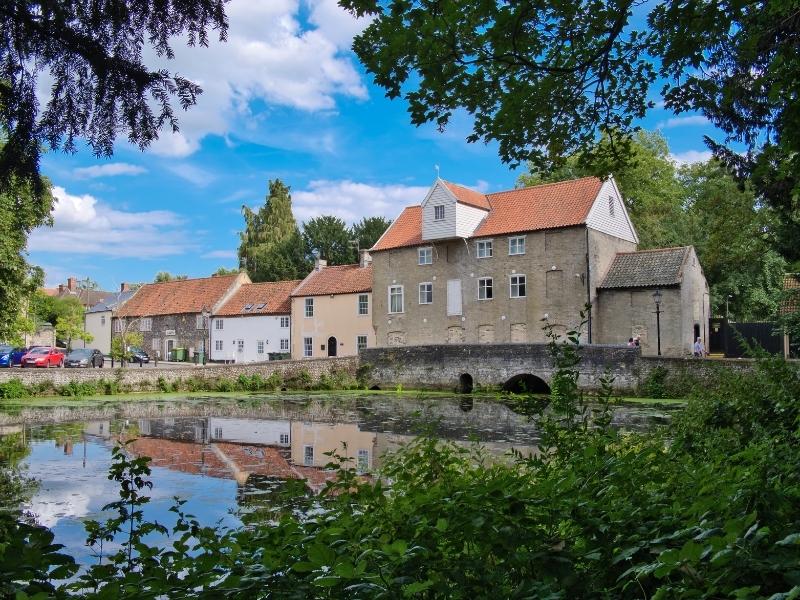
This post may contain affiliate links. If you book something I recommend, I make a small commission without affecting the price you pay!
- A Brief History of Thetford
- The Best Things to Do In Thetford
- The Best Things to Do Near Thetford
- Explore Thetford Forest
- Discover the Devil's Punchbowl
- Enjoy Family Fun at Go Ape
- Discover Grimes Graves
- Visit the Desert Rats Memorial
- Let Off Steam at Knettishall Heath Nature Reserve
- Get Active at Battle Stations Activity Centre
- Explore Weeting Castle
- Catch an Open Day at Euston Hall
- Explore Thetford Warren Lodge
- Hike the National Trails
- Pick Up the Rebellion Way
A Brief History of Thetford
Thetford was home to the red-headed Iceni warrior Queen Boudicca (pronounced boo·duh·kuh). With key sites at both Castle Hill, where an Iron Age fort was built on what is now Icknield Way, and Gallows Hill, Thetford is where Boudicca designed her battle plan to overthrow the Roman Empire, killing 70,000 in the process.
In Saxon times, Thetford was the capital of East Anglia and it was a prosperous place to live, which led to it having its own mint in the 10th century. The Domesday Survey in 1086 estimated Thetford’s population was around 4,500 people, making it the England’s sixth largest town.
By the 12th century, Thetford had became an important religious centre. The foundation stone of the Cluniac Priory was laid and 22 churches were dotted about the town. But by the late 1530’s King Henry VIII’s dissolution of the monasteries meant the Cluniac Priory was left to fall to ruin, along with the rest of Thetford’s religious sites.
Thetford’s fortunes languished until the town became a manufacturing centre for Charles Burrell’s steam traction engines in the 1800s, which were widely regarded as the Rolls Royces of the steam industry. The works attracted engineers from London, the Midlands and Yorkshire until it closed in 1928.
With no major employer, the number of people living in the town dwindled to 5,000. In the 1950’s, Thetford Town Council approached London County Council to bring businesses to the town, and a plan was drawn up for 5,000 Londoners to settle in Thetford.
Today around 22,000 people live in Thetford, many of them descendants of those who relocated to work at Charles Burrell, and those who moved from London in the fifties.
RELATED POST: 30 of the Very Best Things To Do in Norfolk
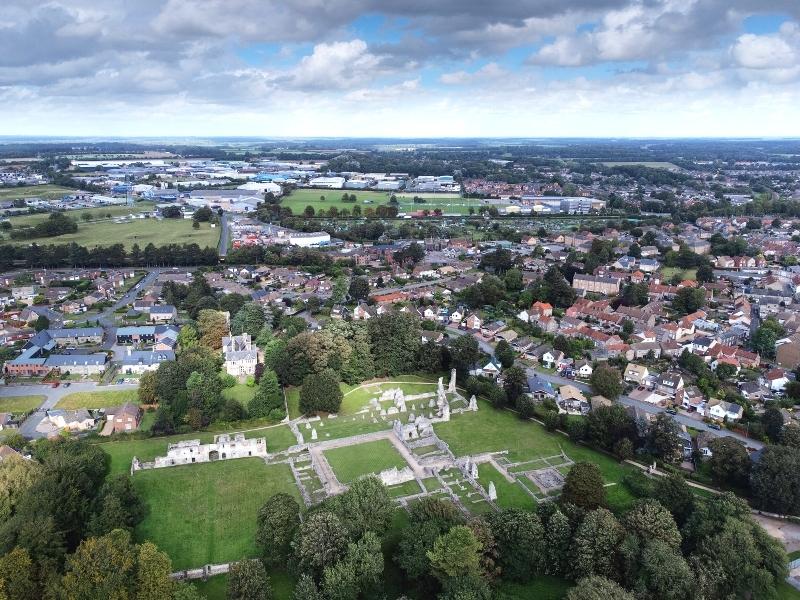
The Best Things to Do In Thetford
Visit the Dad’s Army Museum
For all its history through the ages, one of the things Thetford is best known for is its role in the famous BBC television series, Dad’s Army. In 1968, Thetford found itself playing the part of Walmington-on-Sea, a fictional seaside town on the south coast, on the front line against Hitler.
And so a much-loved sitcom was born, which followed the adventures (and misadventures!) of a fictional platoon of the Home Guard, whose members included Captain George Mainwaring, Sergeant Arthur Wilson, Lance Corporal Jack Jones and Private Frank Pike.
At the Dad’s Army Museum, one of the best places to visit in Thetford, several of the original sets have been reconstructed including the Church Hall, Bunker Room and Home Guard Room. These sets display a range of historic World War II artifacts, military uniforms, photographs, episode scripts and press clippings, as well as models of all the famous characters.
For the best experience, book the two hour Dad’s Army walking tour, which starts at the Charles Burrell Museum in Minstergate and then then takes in the many filming locations around Thetford town centre, the bronze statue of Captain Mainwaring, and ends at the museum, where you can pop into Marigolds Tea Room, for a cuppa and slice of cake!
If you don’t fancy walking, a coach tour includes a private visit to the museum with scone & cake.
The museum opens on Saturdays only, from 10am to 3pm and entrance is free. You must book both walking tours and coach tours in advance as dates are limited, so don’t leave it too late. Find out more about Dad’s Army tours here.
The walking tour of the Thetford locations is also available as self guided leaflet from the museum, or from Thetford`s Leaping Hare Thetford Information Centre in King Street.
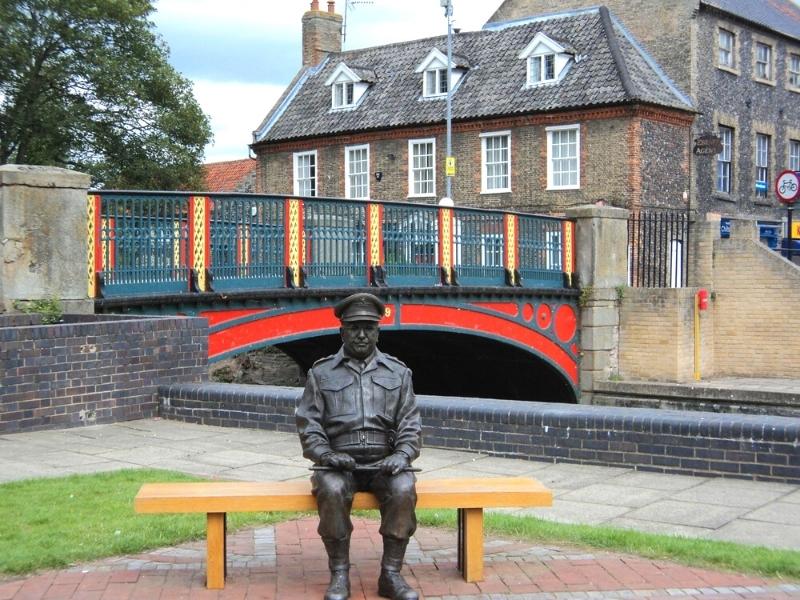
Learn at Ancient House Museum
A fine Grade II listed Tudor building, the Ancient House Museum is home to a natural and local history collection showing the development of Thetford and Breckland life.
The are exhibits showcasing the rich stories and archaeology of the Thetford area, with objects from the Celtic, Roman, Viking and modern eras, along with replicas of the Thetford Treasure, a remarkable hoard of Roman jewellery discovered locally, with the originals on show in the British Museum.
These parts of the museum are interesting, but it’s the fascinating exhibits which highlight the lives of two notable local residents, Maharajah Duleep Singh and Thomas Paine, that are really worth seeing.
Duleep Singh was the last Sikh ruler of the Punjab kingdom, who surrendered his lands and his possessions (including the Koh I Noor diamond) to the British, and came to England to live. He became friends with Queen Victoria and settled at Elveden Hall, near Thetford. His son Prince Frederick was passionate about local history and was one of the driving forces behind the museum.
Thomas Paine was a native of Thetford, born very close to Ancient House in 1737. A writer and policitcal activist, his pamphlets on human rights helped shape modern ideas about democracy, but his ideas were considered dangerously seditious by the British government.
He eventually left Britain for a life in America, where he helped inspire the Patriots of the American Revolution to declare independence from Great Britain in 1776.
Opposite the museum is the Thomas Paine Statue which was gifted to the town of Thetford by the Thomas Paine Foundation in New York. The gilded bronze figure stands in a dramatic pose on top of a large plinth. In his outstretched right hand he holds a quill pen, and in his left he holds a copy of Rights of Man, which are notably upside down!
RELATED POST: Towns in Norfolk – 27 Towns to Visit in Norfolk
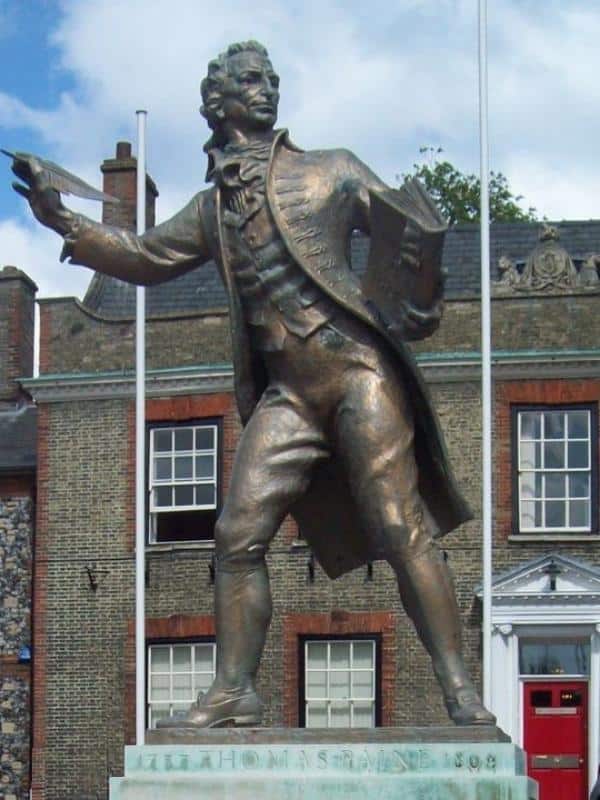
Explore Thetford Priory
The Priory of Our Lady of Thetford was one of the largest and most important monasteries in medieval East Anglia. Founded in 1103–4 by Roger Bigod, the priory was affiliated to the great Benedictine Abbey at Cluny in France, and was built on a magnificent scale in the rich architectural style typical of the Cluniac order.
For 400 years it was the burial place of the Earls and Dukes of Norfolk, and enjoyed their powerful protection. It was because of this that Thetford was one of the last monasteries to be suppressed during the Reformation, when it surrendered to Henry VIII’s commissioners in 1540.
The extensive surviving flint and stone remains include the site of the great Cathedral of St Mary, the priory itself, the Benedictine Nunnery of St George, the 12th century Augustinian Priory of St Sepulchre and an almost complete 14th century gatehouse.
Managed by English Heritage, the priory is open during daylight hours every day and is one of the best free things to do in Thetford. It’s a wonderfully peaceful place to take a wander through the ancient ruins and enjoy the tranquil surroundings with a picnic.
RELATED POST: Norfolk Churches: 16 of the Best to Visit
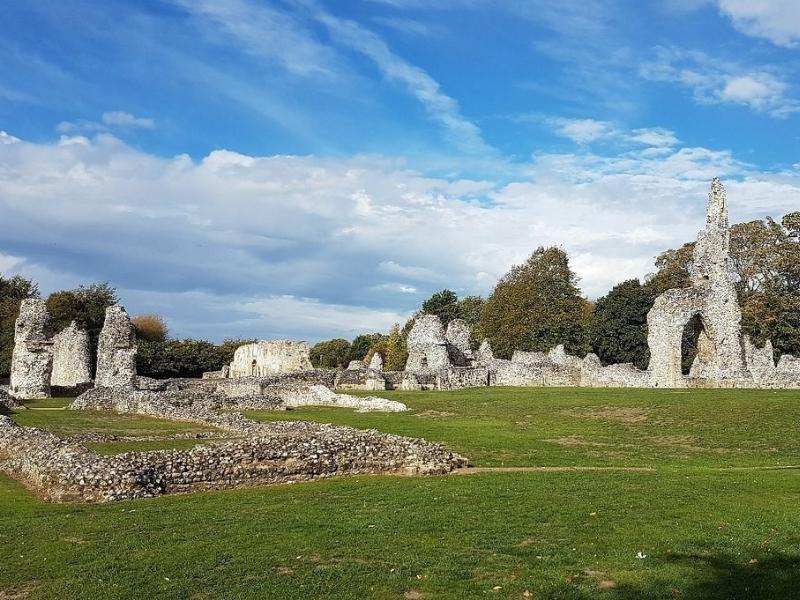
Visit the Charles Burrell Museum
The fantastic Charles Burrell Museum, housed in a listed Grade II former paint shop of Charles Burrell and Sons in Minstergate, is a veritable treasure trove of steam traction engines, agricultural machinery, steam lorries and steam tram engines.
The museum tells the story of the world famous Burrell’s Traction Engines, manufactured in Thetford up until 1928. Three of the steam powered machines made by Charles Burrell in Thetford on are on display, including a general traction engine, steam engine and showmans engine.
Their exhibits also include the Jones Butcher’s delivery van owned by Lance Corporal Jones in the BBC comedy series Dad’s Army, on loan from the nearby Dad’s Army Museum.
RELATED POST: Steam Train Norfolk: 8 of the Best Journeys
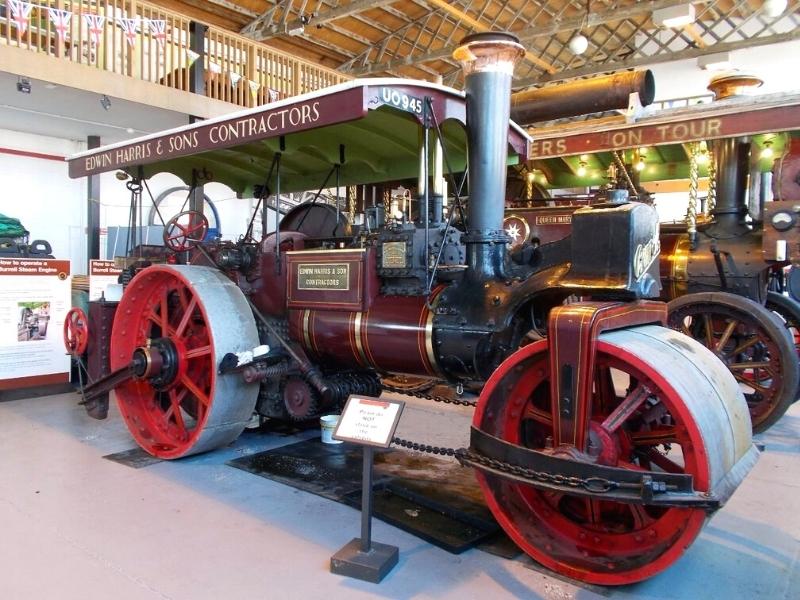
Climb Thetford Castle
Thetford Castle is a 12th century medieval motte and bailey castle, which replaced the original Norman ringwork known as Red Castle, built in the 11th century.
Thetford Castle was largely destroyed in 1173 by Henry II, although the huge motte, the second largest man-made mound in England at over 12 metres, remains intact. The remains are known variously as Castle Hill, Castle Mound and Military Parade.
The motte, recognised as a scheduled monument, now forms part of a Castle Park, a lovely urban green space in Thetford. The mound is not your typical theme park style castle, but it does have a fibreglass staircase to the top and is a magnet for kids (and dogs!), who will love running up and down the mound and practicing being king of the castle!
RELATED POST: 12 Norfolk Castles for You to Explore
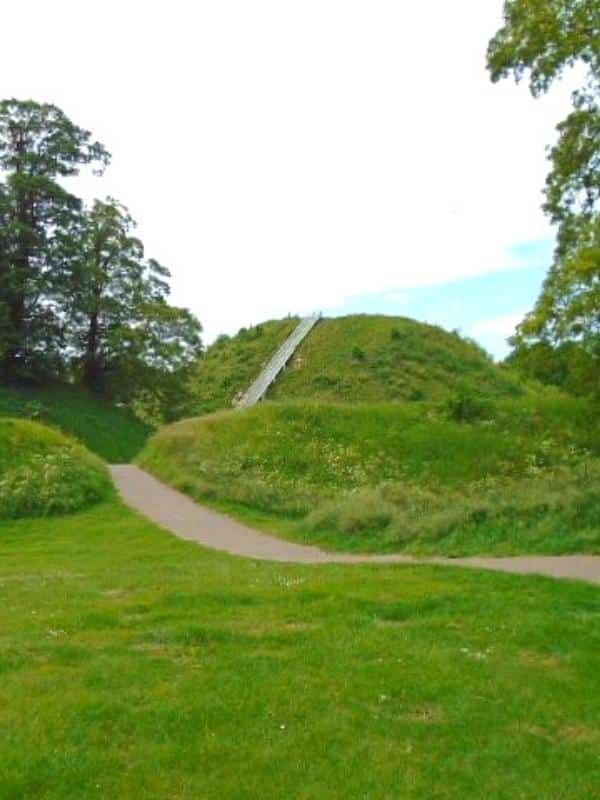
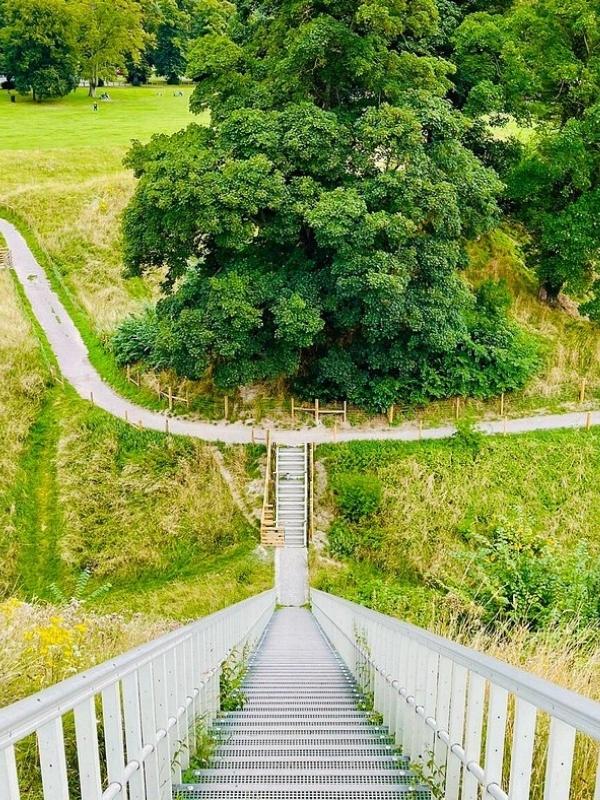
Discover the Holy Sepulchre Priory
This ruined Church of the Holy Sepulchre was part of a medieval monastery known as the Priory of the Holy Sepulchre, founded in the 12th century by William de Warenne, Earl of Surrey, and one of only six English houses of this small monastic order.
Curiously nestled between modern buildings and some of Thetford’s parks, the only surviving building is the nave, which dates to the 14th or 15th century, and was used a barn after it fell into disrepair! There are some good information boards around the site, but this is not on the scale of the Thetford Priory, and will probably only appeal to people who are interested in English religious history.
Managed by English Heritage, the priory is open during daylight hours every day and is free to all.
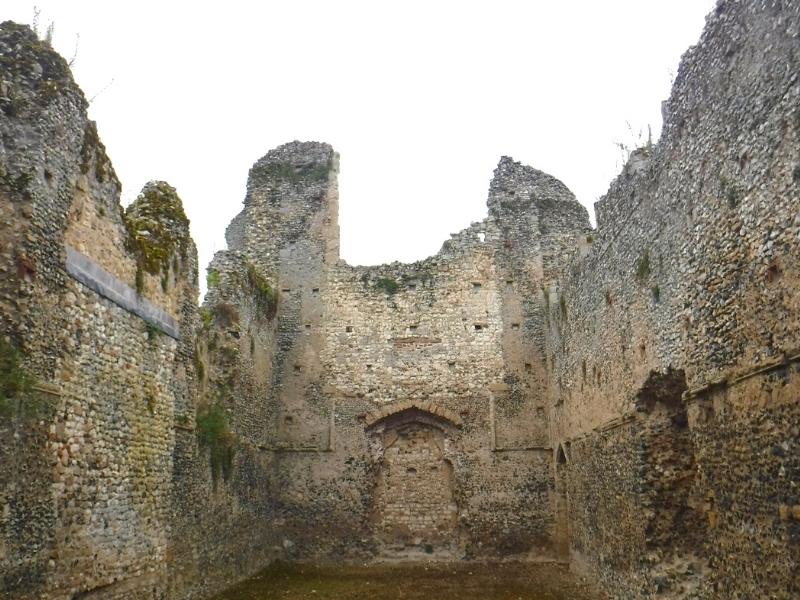
Follow Thetford Heritage Trail
Choose from a selection of self-guided heritage trails, which include information to read and a helpful map of the town. The curiosity trail gives a great introduction to the town and helps you get the most from even the shortest visit, whilst the family trail includes some fun questions too.
Follow the Dad’s Army trail and discover where the outdoor scenes of the legendary TV sitcom were filmed, or pick up on the indsutrial and commerical heritage trail to find out more about Thetford’s history as a steam powerhouse and influential town.
Learn more about the fascinating Duleep Singh, the last Maharajah of the Punjab and first person of Sikh heritage to live in Britain, or follow the story of Thetford’s most famous son Thomas Paine, revolutionary, philosopher and one of the greatest radical thinkers of his age.
The trail leaflets cost £1 each and can be bought online and posted to you, or collected at Leaping Hare Information Centre at Belmont House on King Street.

Go Ghost Hunting!
The Bell Hotel
There are two known ghosts in Thetford for you to go a-hunting, just make sure you’re up for being scared! Find out more about ghost hunting tours and fright nights here.
The Bell Hotel in the centre of town was partly constructed in the 15th century as an inn, but with the arrival of rail links to Norwich, additional wings were constructed and the inn became a hotel.
It is said that Betty Radcliffe, previous owner from the 18th century haunts room 29, with her lover next door in room 30. Betty met her end grisly one night after a heated argument with her lover, when he pushed her out of the window. Her lifeless body was found in the courtyard below.
Visions of a lady standing at the window of room 29 have been reported by guests over the years, along with feelings of someone else being in the room. Pillows have been moved on the bed at night, curtains have closed themselves and staff have reported hearing voices and seeing the chandelier starting to swing in room 30.
Joe Blunt’s Lane
North of the Bell Hotel at Thetford’s railway bridge, a man ended his life more than 100 years ago, because his lover’s mother had publically accused him of attacking her daughter and causing her great harm. Afraid of what might happen to him if he was found guilty of such a terrible crime, the man ended his life by hanging at the railway bridge.
Urban legend has it that the public footpath and bridleway of Joe Blunt’s Lane is named after the man who took his life there. His ghost has been seen at the railway bridge by passers-by at night and the story passed down by families for many years. Many people refuse to walk under the bridge on Joe Blunt’s Lane after nightfall.
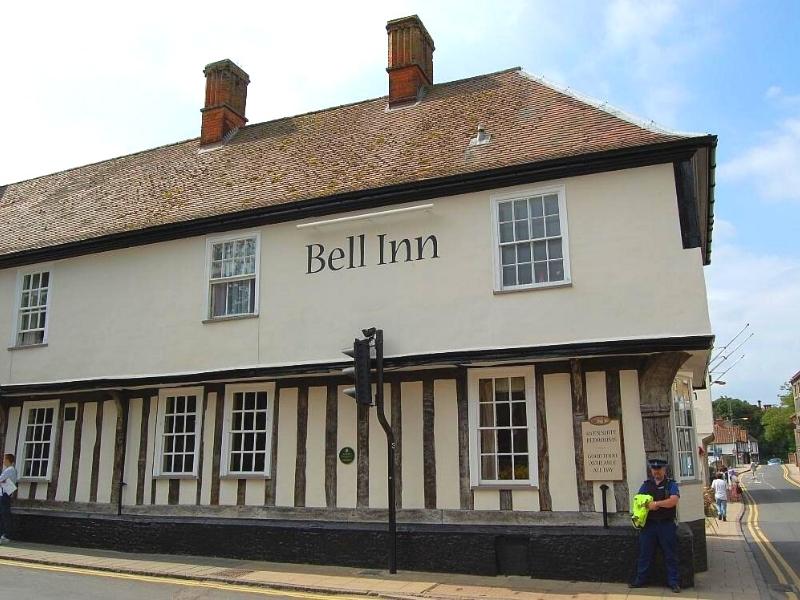
You might also like…
- 21 Of The Best Things To Do in Cromer
- 13 Exciting Things To Do in Great Yarmouth
- All the Best Things To Do in King’s Lynn
- 20 Brilliant Things To Do in Wells-next-the-Sea
- 21 of the Best Things To Do in Hunstanton
- 23 Amazing Things To Do in Sheringham
- 26 Exciting Things To Do On the Norfolk Broads
- 10 Brilliant Reasons to Visit Norfolk!
The Best Things to Do Near Thetford
Explore Thetford Forest
The Brecks, one of the great natural areas of Great Britain, spans 370 square miles across Norfolk and Suffolk, and is one of the driest parts of Britain. The area, much of it a Site of Special Scientific Interest, is full of ecological and rich historical interest.
Thetford Forest in the Brecks is an 18,730 hectare patchwork of pines, heathland and broadleaves, making up the UK’s largest man-made lowland forest. The forest is a haven for plant and animal life and provides the perfect setting for an active family day out.
The High Lodge Forest Centre (this part of the forest is actually in Suffolk) is home to some of the best outdoor activities near Thetford, including a variety of running and cycling trails and exciting outdoor play for younger kids. The annual Forest Live music festival also takes place here along with many other events including outdoor cinema, races and nature trails.
You’ll also find history and heritage at Mildenhall Warren and Lynford Arboretum, and peaceful walking around St Helen’s and Lynford Stag.
RELATED POST: What’s On in Norfolk – 70+ Dates for Your Diary in 2022

Discover the Devil’s Punchbowl
A perfectly circular mysterious crater-like pond, the Devil’s Punchbowl north of Croxton village has a weird ability to empty and fill completely at odds with rainfall patterns.
Hundreds of years ago, locals were confused by the way the ponds water levels changed so they attributed the phenomenon to the devil. But there’s nothing weird about this fluctuating mere north of Thetford.
The mere was formed when sub-surface chalk slowly eroded to form an underground chasm, which eventually collapsed to form a surface sinkhole called a doline. The water level in this relatively deep depression represents a rare surface exposure of the usually hidden subsurface aquifer, or water table.
The water table is of course linked to rainfall, but because of the time-lag between rain and the mere filling, which can be months, it seems to be unconnected. There are no devils in this punchbowl, just nature at it’s most mystifying best!
If you want to visit drive west on Harling Drove from Wyrley’s Belt north of Croxton. Half a mile on the left is a forest access road with a small gravel car park area. There is an information board and paths to the water, but the ground can get quite wet and visitors are discouraged from disturbing the vegetation as the mere is a designated Site of Special Scientific Interest.
Alternatively, this excellent circular walk around nearby East Wretham Heath Nature Reserve takes in much of the wildlife rich area and also explores the Devils Punchbowl.
RELATED POST: Norfolk Nature Reserves – Ultimate A-Z Guide
Enjoy Family Fun at Go Ape
Home of the first Go Ape in 2002, Go Ape Thetford Forest at High Lodge is a great place for a family day out and one of the best things to do around Thetford.
With their signature Treetop Challenge, Treetop Adventure and Treetop Adventure Plus, as well as all wheel drive Forest Segways, you’ll find a fun activity whatever your age or ability.
RELATED POST: Norfolk Theme Parks – Ultimate A-Z Guide
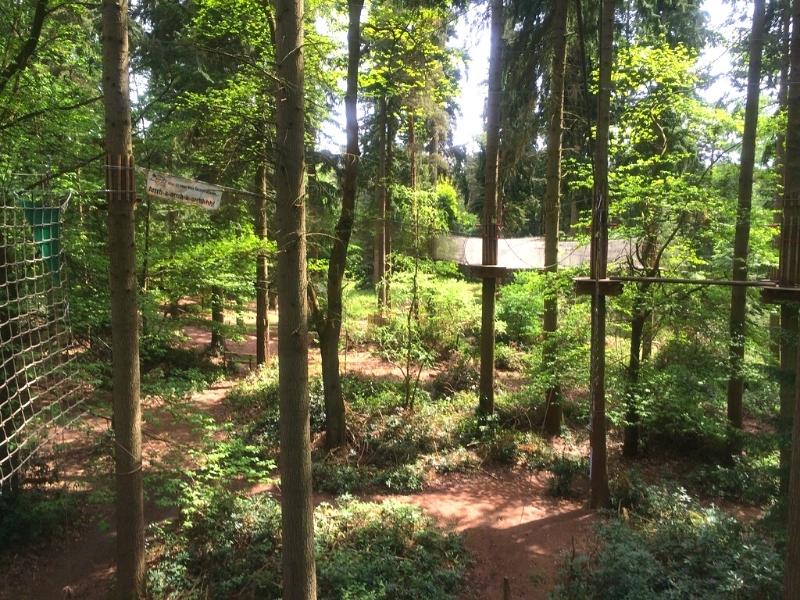
Discover Grimes Graves
Not a grave, nor a burial place, Grime’s Graves is a fascinating Neolithic flint mine worked between about 2200 and 2500 BCE, and the only ancient flint mine open to visitors in Britain.
If you didn’t know what was beneath, you might think you were walking over a particularly bumpy meadow, but this grassy lunar landscape hides 400 flint mines beneath. First named Grim’s Graves by the Anglo-Saxons, it was not until one of them was excavated in 1870 that they were identified as flint mines that were dug over 5,000 years ago.
A small exhibition area illustrates the history of this historic site. Visitors can descend nine metres by ladder into one excavated shaft to see the jet-black flint, which was used for making axes which were highly prized tools and were traded across the British Isles.
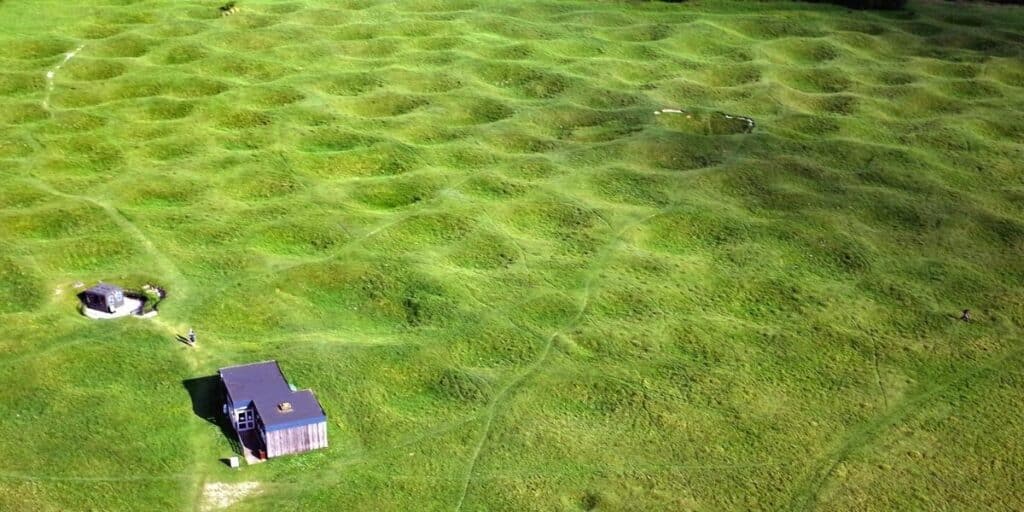
Visit the Desert Rats Memorial
The 7th Armoured Division was stationed in Thetford Forest between January and May 1944 while they prepared for the invasion of Normandy.
This was the only time the division was in the United Kingdom in it’s entire existence – they fought from El Alamein to Berlin via Monte Cassino in Italy, Thetford Forest, France, Belgium and Holland. The Division sailed from Felixstowe on the 5 June 1944 with the first tanks landing on Gold Beach on the evening of 6th June 1944.
The Desert Rats Memorial and main plaque were inaugurated on 23rd October 1998 and are located on the A1065 2 miles north of Mundford and 11 miles north of Thetford. The additional plaque commemorating the Desert Rats of the 4th & 7th Armoured Brigades from 1945 to 2003 was added to the plinth and inaugurated on 27th June 2004.
The moving memorials are dedicated to all who served in the 7th Armoured Division (The Desert Rats), the 4th Armoured Brigade (The Black Rats) and the 7th Armoured Brigade (The Green Jerboa), throughout history.
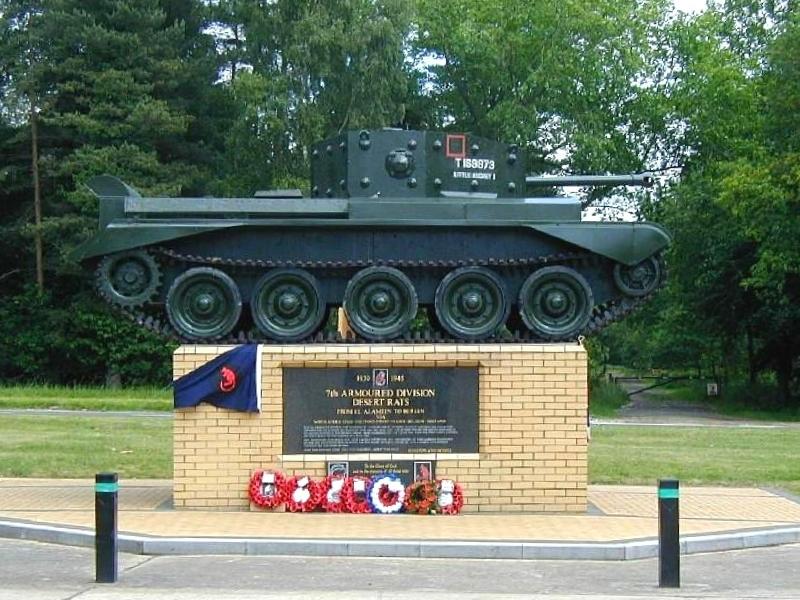
Let Off Steam at Knettishall Heath Nature Reserve
Knettishall Heath Country Park in the heart of the Brecks is just over the border in Suffolk, but makes a great trip out from Thetford, especially with kids, and a picnic!
With six trails around the reserve between 1 and 2.5 miles in length, kids will be fascinated by the birds, butterfiles, insects and animals, like deer, which live in the nature reserve, and the wild ponies which graze across the area. Please remember not to approach the ponies and keep dogs on a lead.
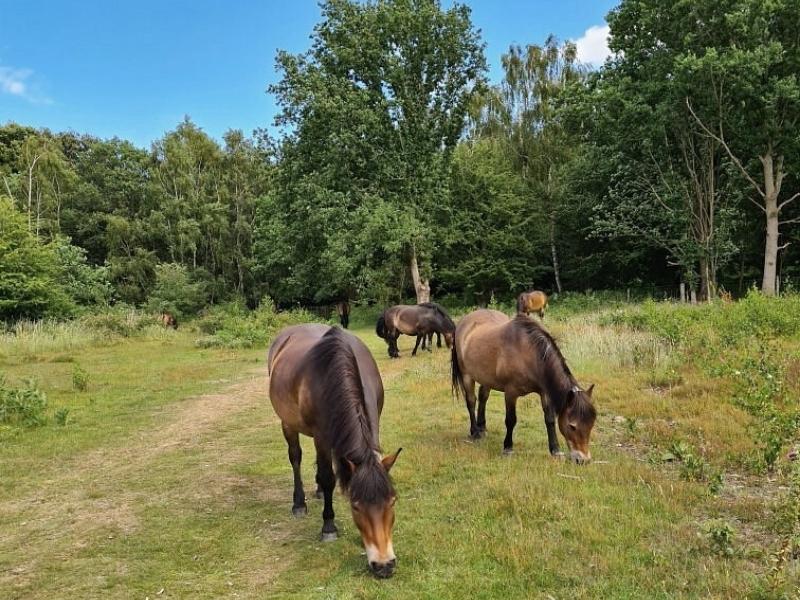
Get Active at Battle Stations Activity Centre
Ten miles east of Thetford is the Battle Stations Activity Centre, where big kids and small can get their game on! Specializing in close quarter battles with battle airsoft and woodland airsoft (unlike combat paintball, airsoft uses 6mm round BBs made of hard plastic). You can also play laser tag, NERF, archery and arrow tag.
Families with younger players can take part in games like low impact paintball and airsoft. If you fancy a good old fashioned shoot out, or maybe a birthday treat for someone, this is the place to come!
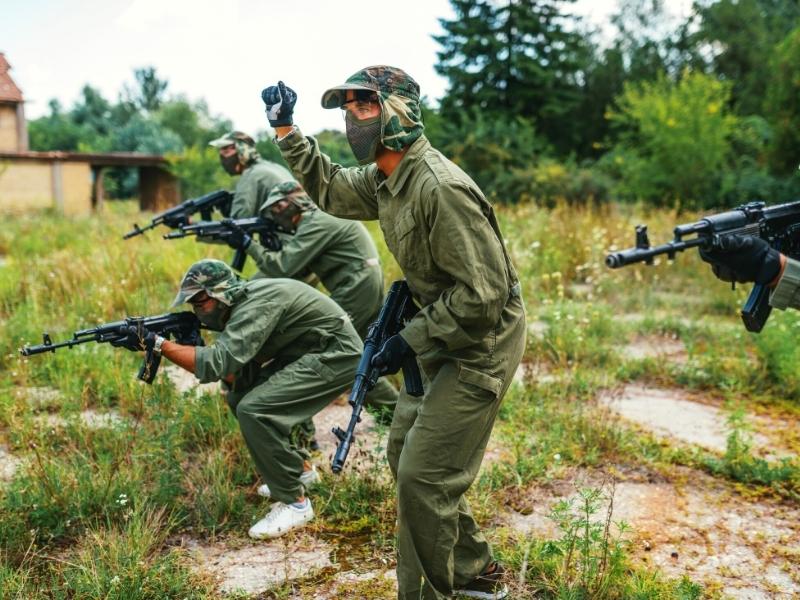
Explore Weeting Castle
North of Thetford, on the edge of the forest, the ruins of Weeting Castle are a example of a grand 12th century manor house, and a typical example of an East Anglian ‘great house’, built in local flint.
Despite its name, Weeting Castle was never fortified. The moat which surrounded the building was added in the mid-13th century and was built to demonstrate the wealth and power of the owners, before the hall was abandoned in the late 14th century.
The site has a long history of use, from the 10th century until the late 18th century. Archaeological excavations at the southern end of the hall have discovered artefacts dating back to the Saxon period, suggesting that a Saxon settlement existed here before the stone hall was built.
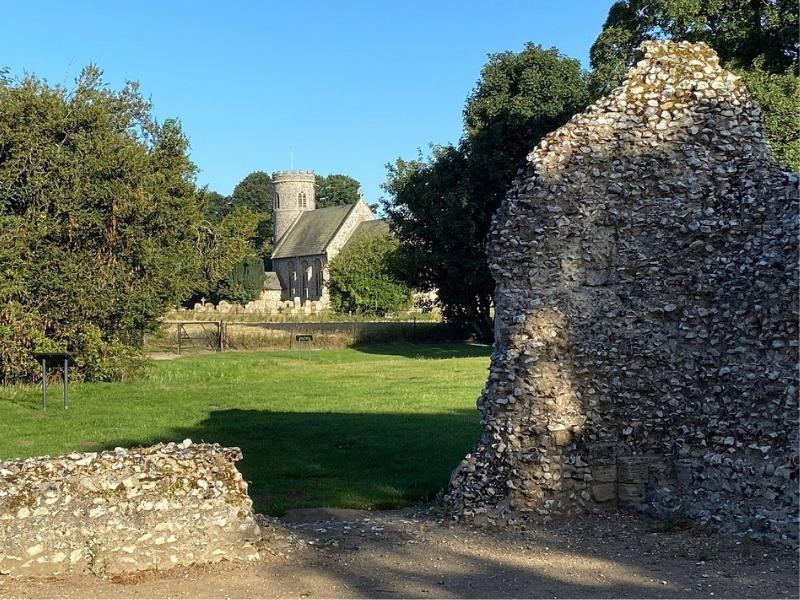
Catch an Open Day at Euston Hall
Just a few miles over the Norfolk-Suffolk border towards Bury St Edmunds is Euston Hall, a Palladian stately home set in 10,500 acres of landscaped gardens, parkland, ancient broadleaf woodland and agricultural farmland.
The Pleasure Grounds of Euston Estate are a real gem. Laid out in the 1670’s by King Charles II’s courtier and celebrated landscape designer, John Evelyn, the grounds were designed around the newly built Hall. This remains the basis of the landscape you see today, which was extended over the 18th century by Capability Brown and William Kent.
The Hall is the private residence and home of the 12th Duke of Grafton and his family, who invite the public to visit during open days which are usually held across a week in May, and a week in September. You can find out more details about dates and visiting Euston Hall here.
Euston Estate also hosts the Red Rooster Music Festival in June every year, where live blues, soul and country music take centre stage.
RELATED POST: 14 Stately Homes in Norfolk to Visit
Explore Thetford Warren Lodge
The defensible Thetford Warren Lodge was built around 1400 by the Prior of Thetford, to protect gamekeepers and hunting parties against armed poachers. In an area where stone and brick were costly materials, this substantial stone building demonstrated the wealth and social standing of its owner.
Until the early years of the 20th century the area surrounding the lodge was one of the most productive rabbit warrens in the Breckland region of Norfolk, and it is known that the warreners who managed and culled the stock occupied Thetford Warren Lodge from at least the 18th century onwards. They made alterations to the building and used the rooms on the ground floor for drying rabbit skins and storing their traps, nets and lanterns.
Thetford Warren Lodge stands alone on the edge of a large tract of forest, just off the B1107. From Thetford, drive past Thetford Golf Club, and half a mile on take the left turn that leads onto a dirt track, where you will find a small car park. It’s a five minute walk from here to the Lodge, which is open during daylight hours and free to visit.
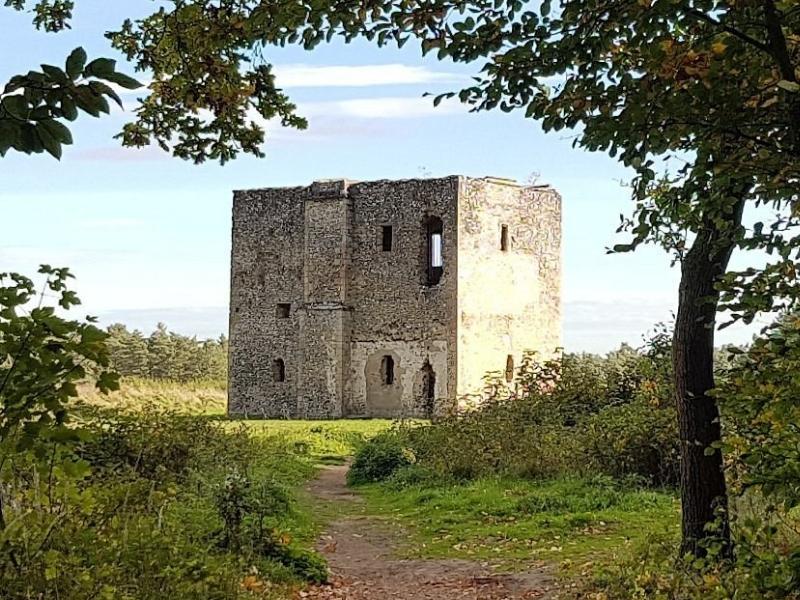
Hike the National Trails
Pedder’s Way
Peddars Way starts in the Brecks at Knettishall Heath Country Park near Thetford and follows the route of a Roman road, built along the line of an even older trackway, for 46 miles, to Holme-next-the-Sea on the North Norfolk Coast before meeting the Norfolk Coast Path.
A gentle walk through the Norfolk countryside, the Pedders Way rewards you with sweeping views over heathland and low river valleys. You will visit historic villages, medieval churches and ancient castles, and discover ever changing countryside on your route north.
Icknield Way Path
The Icknield Way is an ancient trackway in southern and eastern England that runs from Norfolk to Wiltshire and is generally said to be one of the oldest roads in Great Britain, and one of the few long-distance trackways to have existed before the Romans occupied the country. Dotted with archaeological remains, the way survives as fantastic tracks and green lanes along the chalk spine of England.
The Icknield Way Path runs from the Peddar’s Way National Trail at Knettishall Heath to the end of the Ridgeway National Trail at Ivinghoe Beacon for 110 miles, and takes in delightful landscapes and countryside including the Brecks.
RELATED POST: Walks in Norfolk – 14 of the Best Trails
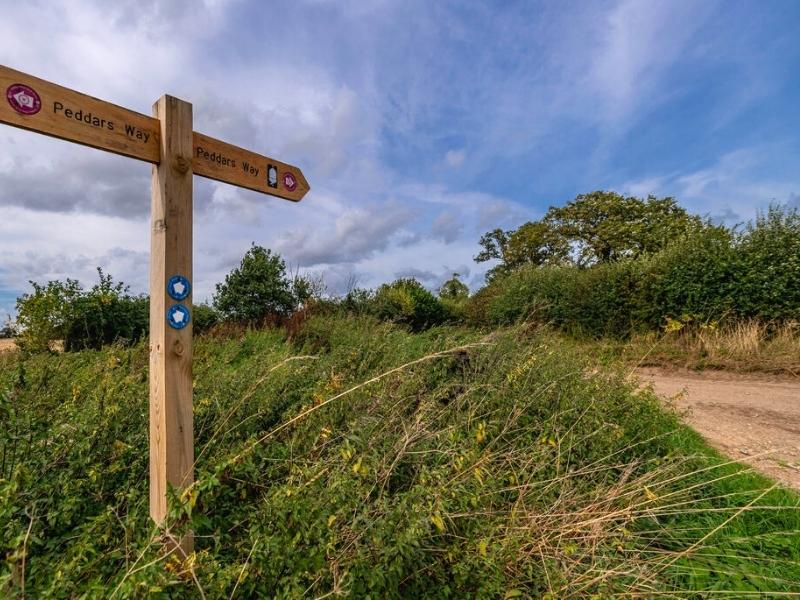
Pick Up the Rebellion Way
Running right through Thetford is the the Rebellion Way, an exciting 232 mile cycle route which is a scenic tour of Norfolk’s landscape, culture, and heritage.
The trail gives cyclists a fantastic introduction to multi-day, on- and off-road touring as it meanders along quiet, mostly flat back roads, byways, cycle paths, and bridleways, allowing cyclists to explore some of Norfolk’s lesser-known gems, including Thetford Forest.
RELATED POST: Rebellion Way: Norfolk’s Most Exciting Cycle Route

Have I missed your favourite thing to do in Thetford from my round up? Let me know in the comments below so I can get it added!
Love it? Pin it!

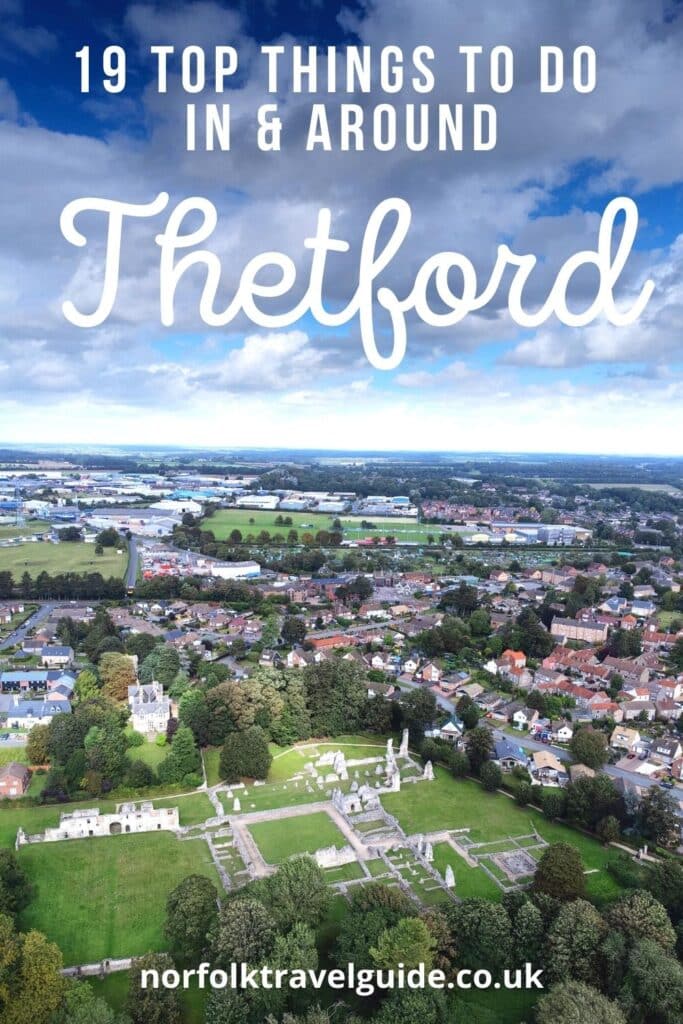

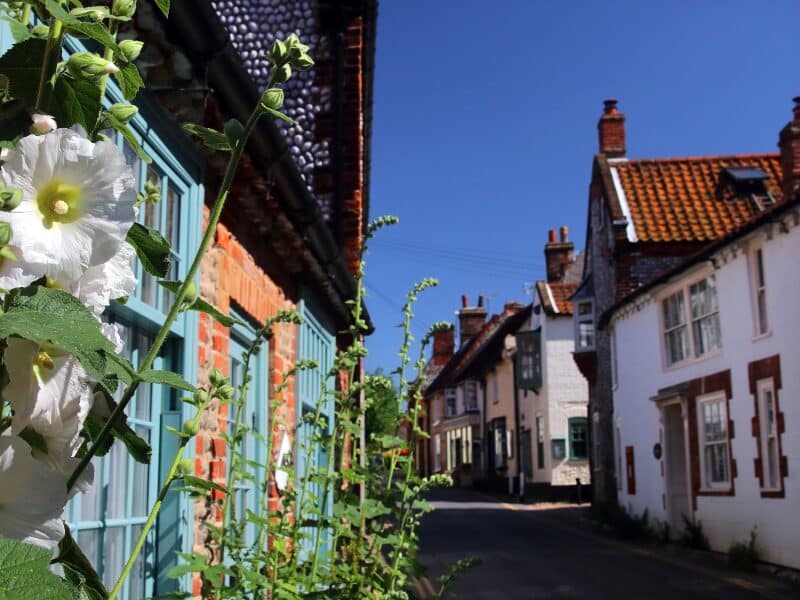
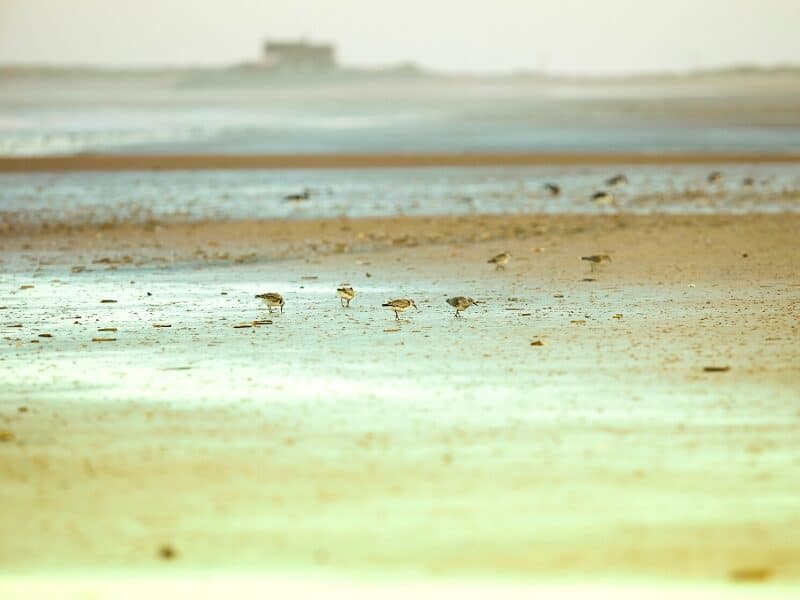
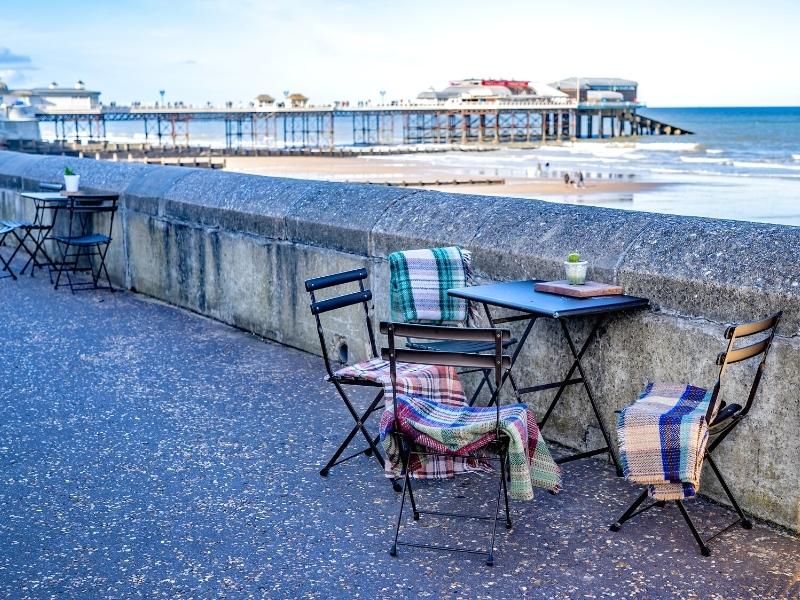

Dear sir
Is it a visitor centre or a museum with information on the battle at Ringmere i AD 1010 near Thatfield? We are four norwegians visiting Cambridge in March who want to see this famous place.
Regards
Lars F Stenvik
Hi Lars There is no musuem or visitor centre. I’t not even known if the site near Therford was THE site, there are other possible places as you can see here https://www.heritage.norfolk.gov.uk/record-details?MNF58297-Possible-site-of-the-Battle-of-Ringmere I hope that helps? Izzy